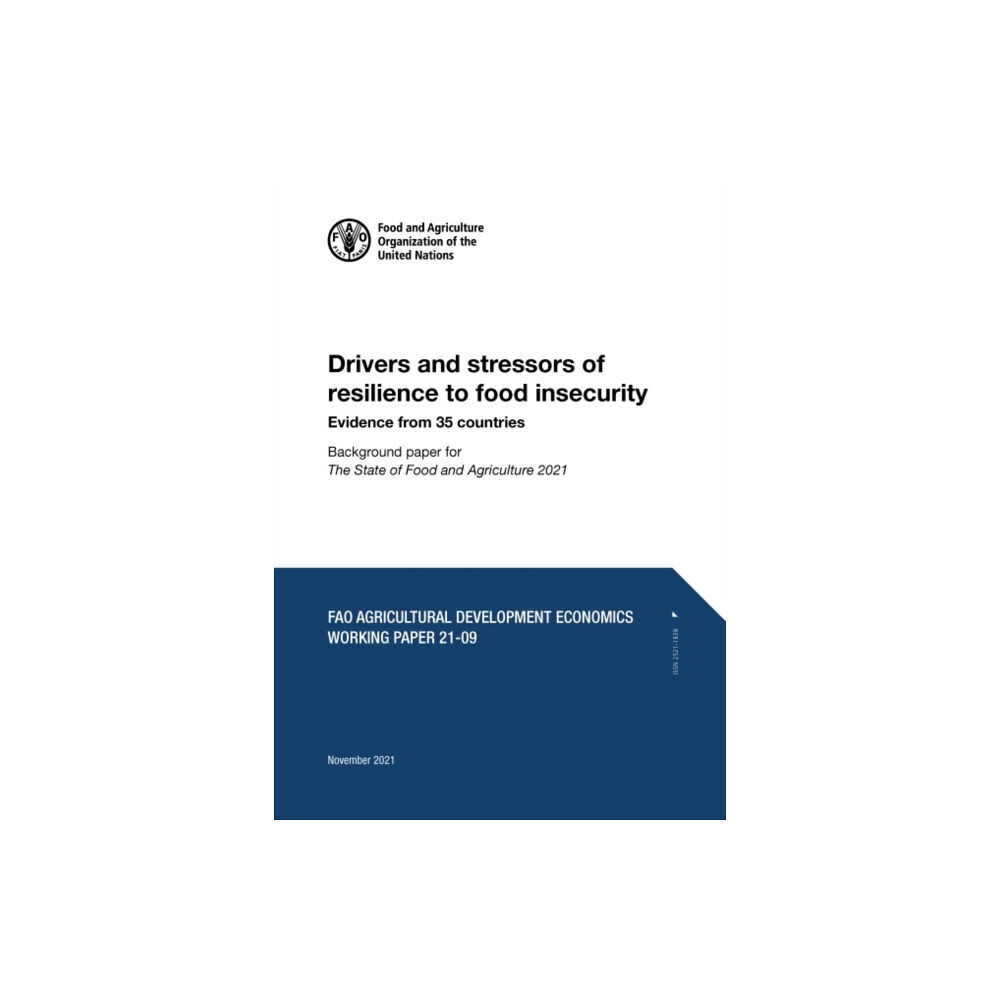- Hem
- Böcker
- Kurslitteratur
- Teknik, Industri & IT
- Drivers and stressors of resilience to food insecurity (häftad, eng)

Drivers and stressors of resilience to food insecurity (häftad, eng)
Resilience is often associated with multivalued and multi-faceted strategies, programs, and projects. After approximately 15 years of empiri...
549 kr
595 kr
Slut i lager
- Fri frakt
Fri frakt över 299:-
Snabb leverans
Alltid låga priser
Produktbeskrivning
Resilience is often associated with multivalued and multi-faceted strategies, programs, and projects. After approximately 15 years of empirical evidence in the literature, few research questions remain unexplored and unanswered, especially with the recent occurrence of a global pandemic.
In this paper, we are assessing whether there are few and consistently relevant elements that determine resilience capacity as well as investigating which shocks are most dramatically reducing resilience. We also investigate which coping strategies are most frequently adopted in the presence of shocks.
Our results show that diversification of income sources, education, access to land, livestock, and agricultural inputs, are the main drivers of households'' resilience capacity. Moreover, the most prevailing shocks are found to be natural, health and livelihood-related shocks.
In addition to this, we show that reducing the quantity and quality of food consumed, seeking an extra job, selling assets, taking credit, relying on relatives and social networks are the most adopted coping strategies. Finally, we found that coping strategies are able to mitigate the adverse effects of shocks on resilience capacity; however, they are not sufficient to offset their long-term negative consequences.
Our conclusion is that adequate investments in resilience are conditional to a) engaging with activities that are broadly consistent across countries and b) fine-tuning the interventions based on context-specificity
In this paper, we are assessing whether there are few and consistently relevant elements that determine resilience capacity as well as investigating which shocks are most dramatically reducing resilience. We also investigate which coping strategies are most frequently adopted in the presence of shocks.
Our results show that diversification of income sources, education, access to land, livestock, and agricultural inputs, are the main drivers of households'' resilience capacity. Moreover, the most prevailing shocks are found to be natural, health and livelihood-related shocks.
In addition to this, we show that reducing the quantity and quality of food consumed, seeking an extra job, selling assets, taking credit, relying on relatives and social networks are the most adopted coping strategies. Finally, we found that coping strategies are able to mitigate the adverse effects of shocks on resilience capacity; however, they are not sufficient to offset their long-term negative consequences.
Our conclusion is that adequate investments in resilience are conditional to a) engaging with activities that are broadly consistent across countries and b) fine-tuning the interventions based on context-specificity
| Format | Häftad |
| Omfång | 45 sidor |
| Språk | Engelska |
| Förlag | Food & Agriculture Organization of the United Nations (FAO) |
| Utgivningsdatum | 2022-03-01 |
| ISBN | 9789251352274 |
Specifikation
Böcker
- Häftad, 45, Engelska, Food & Agriculture Organization of the United Nations (FAO), 2022-03-01, 9789251352274
Leverans
Vi erbjuder flera smidiga leveransalternativ beroende på ditt postnummer, såsom Budbee Box, Early Bird, Instabox och DB Schenker. Vid köp över 299 kr är leveransen kostnadsfri, annars tillkommer en fraktavgift från 29 kr. Välj det alternativ som passar dig bäst för en bekväm leverans.
Betalning
Du kan betala tryggt och enkelt via Avarda med flera alternativ: Swish för snabb betalning, kortbetalning med VISA eller MasterCard, faktura med 30 dagars betalningstid, eller konto för flexibel delbetalning.
Specifikation
Böcker
- Format Häftad
- Antal sidor 45
- Språk Engelska
- Förlag Food & Agriculture Organization of the United Nations (FAO)
- Utgivningsdatum 2022-03-01
- ISBN 9789251352274
